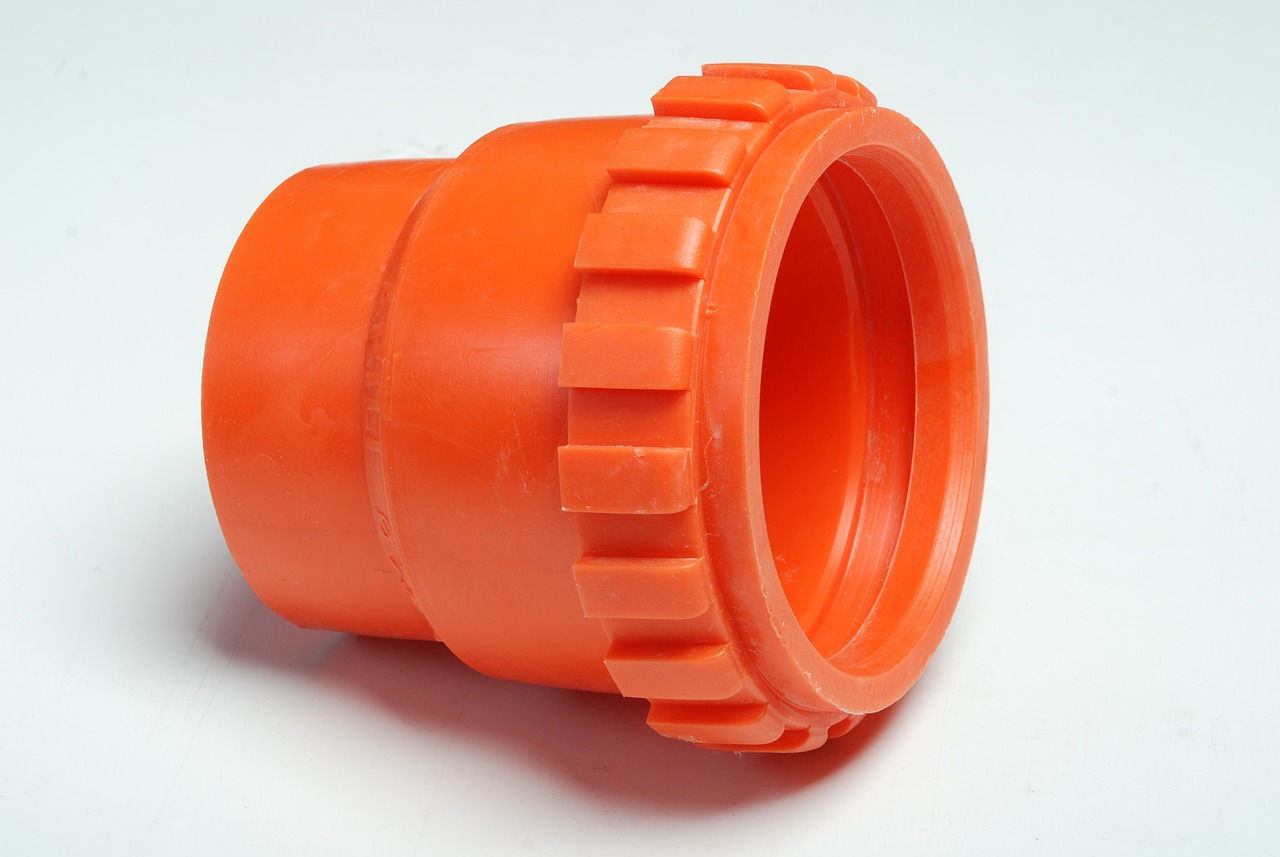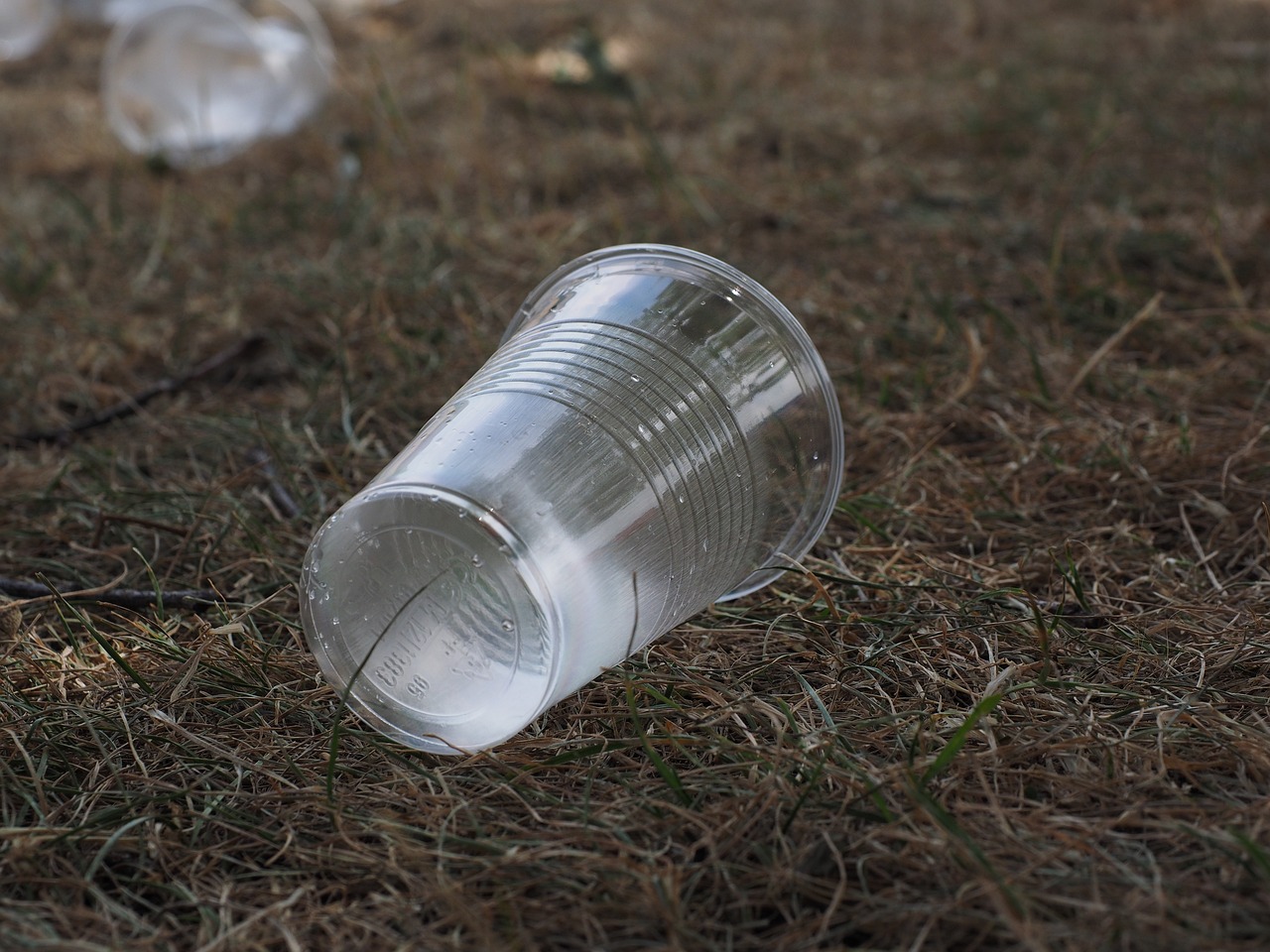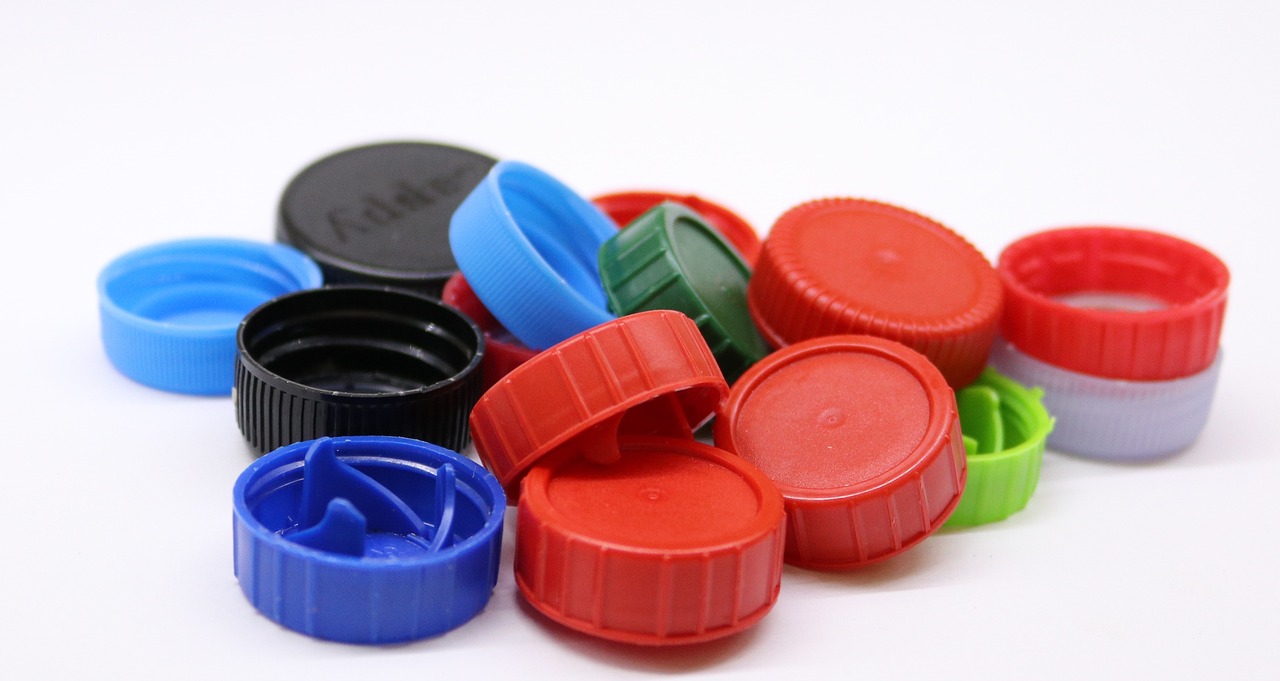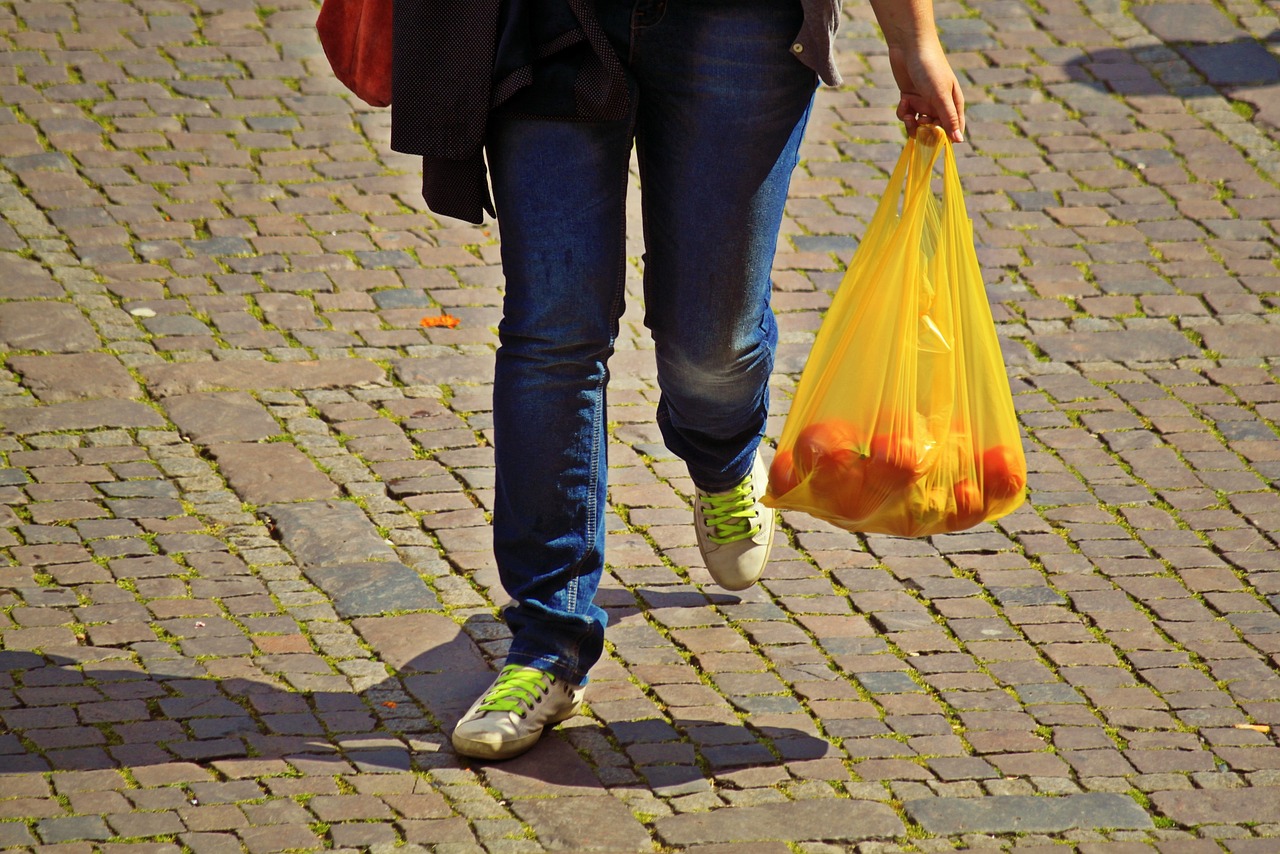Are Compostable Plastics a Viable Alternative?
In a world increasingly plagued by plastic waste, the search for sustainable solutions has never been more urgent. Compostable plastics have emerged as a potential game-changer in the quest to reduce our environmental footprint. But what exactly are they, and can they truly serve as a viable alternative to traditional plastics? This article will explore the multifaceted nature of compostable plastics, examining their benefits, challenges, and the pivotal role they play in environmental conservation.
Compostable plastics are specially engineered materials designed to decompose into non-toxic components when exposed to the right conditions in a composting environment. Unlike conventional plastics, which can take hundreds of years to break down, compostable plastics can transform into organic matter in a matter of months. These materials can be broadly categorized into two types: bioplastics, made from renewable resources, and petrochemical-based plastics, which are designed to compost but originate from fossil fuels. The key distinction lies in their ability to break down effectively in composting settings, which is crucial for their environmental benefits.
The adoption of compostable plastics offers numerous environmental advantages that can significantly mitigate the impacts of plastic waste. One of the most compelling benefits is the potential for reduced landfill waste. When compostable plastics are disposed of in the right facilities, they can be transformed into nutrient-rich compost, effectively diverting waste from landfills. Moreover, this process can lead to lower carbon emissions compared to traditional plastic disposal methods, such as incineration. This is because composting generates less greenhouse gas than burning plastic, making it a more eco-friendly option.
Compostable plastics can significantly alter waste management practices, offering a complementary approach to existing recycling systems. By integrating compostable materials into the waste stream, municipalities can promote more sustainable disposal methods. For example, composting facilities can process these materials alongside organic waste, creating a closed-loop system that minimizes waste and maximizes resource recovery.
One of the most pressing issues we face today is plastic pollution. By substituting conventional plastics with compostable options, we can actively mitigate the growing problem of plastic waste accumulating in oceans and landfills. Imagine walking along a beach free from plastic debris, where marine life thrives instead of struggling against the choking grip of discarded bottles and bags. The potential reduction in plastic pollution is not just a dream; it could be a reality with the widespread adoption of compostable plastics.
Another compelling reason to embrace compostable plastics is their positive impact on soil health. When these materials break down, they contribute essential nutrients back into the soil, promoting healthier ecosystems. This nutrient enrichment can lead to improved crop yields and a more resilient agricultural system. In essence, compostable plastics serve as a bridge between waste management and agricultural sustainability, creating a symbiotic relationship that benefits both the environment and food production.
Despite their numerous benefits, compostable plastics face several challenges that hinder widespread adoption. One significant obstacle is consumer awareness. Many people remain uninformed about what compostable plastics are and how to dispose of them correctly. Additionally, the infrastructure required to compost these materials is not universally available, which can create confusion and frustration among consumers. Without a clear understanding and appropriate facilities, the potential of compostable plastics may remain untapped.
Educating consumers about compostable plastics is crucial for their acceptance and effective use. Strategies to raise awareness can include public campaigns, educational programs in schools, and collaborations with local businesses to promote responsible usage. By fostering a culture of sustainability, we can empower individuals to make informed choices that positively impact the environment.
Clear labeling and established standards are essential for guiding consumers in identifying true compostable products. Current guidelines and certifications help demystify the composting process and ensure that consumers can easily differentiate between compostable and non-compostable plastics. This transparency is vital for building trust and encouraging the adoption of compostable plastics.
The future of compostable plastics looks promising as technology continues to advance. Innovations in material science may lead to the development of even more effective compostable options, making them a more attractive alternative to traditional plastics. As awareness grows and infrastructure improves, we could see a significant shift towards a more sustainable future, where compostable plastics play a vital role in reducing our environmental impact.
- What are compostable plastics made from? Compostable plastics can be made from renewable resources like corn starch or sugarcane, or they can be petrochemical-based materials designed to decompose.
- Can compostable plastics be recycled? No, compostable plastics should not be recycled with traditional plastics, as they require specific composting conditions to break down effectively.
- How long does it take for compostable plastics to decompose? Under optimal composting conditions, compostable plastics can break down within a few months, turning into nutrient-rich compost.

Understanding Compostable Plastics
Compostable plastics are a revolutionary step forward in our ongoing battle against plastic waste. Unlike traditional plastics, which can take hundreds of years to decompose, compostable plastics are designed to break down into non-toxic components in a composting environment. This means that when you toss them into a compost bin, they can disintegrate and return nutrients to the soil, enriching it rather than polluting it. But what exactly are these innovative materials made of, and how do they differ from the conventional plastics we are all too familiar with?
The composition of compostable plastics typically includes biopolymers derived from renewable resources, such as corn starch, sugarcane, or even potato starch. This is a stark contrast to traditional plastics, which are made from petroleum-based products. There are two primary types of compostable plastics:
- Biodegradable Plastics: These are designed to break down into smaller pieces over time, often through microbial action, but may not necessarily compost fully in a composting environment.
- Compostable Plastics: These are specifically engineered to decompose into natural elements in a composting system, leaving no toxic residue behind.
Understanding these differences is crucial for both consumers and manufacturers. While biodegradable plastics may seem like a viable option, they often require specific conditions to break down effectively, which can lead to confusion in waste management systems. Compostable plastics, on the other hand, are generally more straightforward; they need to be processed in industrial composting facilities that maintain the right temperature and moisture levels for optimal decomposition.
One of the most significant challenges with compostable plastics is the infrastructure required for their effective disposal. Many regions lack the necessary facilities to process compostable materials, leading to the unfortunate reality that these products can end up in landfills, where they may not break down as intended. This highlights the importance of developing a robust composting infrastructure alongside educating the public about the proper disposal methods for compostable plastics.
In summary, compostable plastics represent a promising alternative to traditional plastics, with the potential to significantly reduce our environmental footprint. By understanding their composition and the conditions required for their breakdown, we can better appreciate their role in sustainable waste management. As we continue to innovate and improve our waste disposal systems, compostable plastics could play a crucial role in paving the way toward a cleaner, greener future.

Benefits of Compostable Plastics
Compostable plastics are not just a trendy buzzword; they are a game-changer in the quest for sustainable living. Imagine replacing the traditional plastic that clutters our landfills and oceans with materials that can naturally decompose and enrich the soil. This transformation could lead to a cleaner planet, and the benefits of compostable plastics are multifaceted. First and foremost, they significantly reduce landfill waste. When compostable plastics are disposed of properly, they break down in composting facilities, thereby diverting waste from landfills and helping to minimize the overwhelming plastic pollution crisis we face today.
Another notable benefit is the reduction of carbon emissions. Traditional plastics are derived from fossil fuels, and their production process is energy-intensive, releasing significant amounts of greenhouse gases into the atmosphere. In contrast, compostable plastics can be made from renewable resources such as corn starch or sugarcane, which not only lowers the carbon footprint during production but also contributes to a more sustainable cycle of consumption. This means that every time we choose a compostable option, we are making a conscious effort to combat climate change.
Moreover, composting these materials can enrich our soils, leading to healthier ecosystems. As compostable plastics break down, they release valuable nutrients back into the earth. This process not only promotes soil health but also supports biodiversity. For instance, microorganisms and insects thrive in nutrient-rich soils, which can enhance plant growth and improve agricultural yields. It’s like giving Mother Nature a much-needed boost!
To put it simply, the benefits of compostable plastics can be summarized as follows:
- Reduced Landfill Waste: Proper disposal leads to less waste in landfills.
- Lower Carbon Emissions: Made from renewable resources, they have a smaller carbon footprint.
- Soil Enrichment: They contribute nutrients back into the soil, promoting healthier ecosystems.
In addition to these environmental advantages, compostable plastics can also play a crucial role in transforming waste management practices. They can be integrated into existing recycling systems, providing a complementary solution that promotes sustainable waste disposal methods. By encouraging the use of compostable materials, municipalities can reduce the burden on their waste management systems and promote a circular economy.
In conclusion, the benefits of compostable plastics extend far beyond just being an eco-friendly alternative. They represent a holistic approach to tackling plastic pollution, reducing carbon emissions, and enhancing soil health. By embracing compostable plastics, we are not only making a choice for ourselves but also for future generations. So, the next time you're faced with the option of choosing between traditional plastic and compostable alternatives, remember that your choice can lead to a ripple effect of positive change!

Impact on Waste Management
When we think about waste management, it often feels like a daunting task, doesn’t it? The sheer volume of waste we generate daily can be overwhelming. However, the introduction of compostable plastics is changing the game in a way that feels almost revolutionary. Imagine a world where the materials we use can actually contribute positively to our environment instead of just piling up in landfills. Compostable plastics are designed to decompose in composting environments, which means they can be integrated into existing waste management systems, offering a complementary solution to traditional recycling.
One of the most significant impacts of compostable plastics on waste management is their potential to reduce the amount of waste sent to landfills. Traditional plastics can take hundreds of years to break down, but compostable plastics are engineered to decompose within a matter of months under the right conditions. This rapid breakdown not only lessens landfill burden but also helps in creating nutrient-rich compost that can be used to enrich soil.
Moreover, the integration of compostable plastics into waste management practices can lead to lower carbon emissions. When organic materials decompose in landfills, they produce methane, a greenhouse gas that is far more potent than carbon dioxide. By diverting these materials to composting facilities, we can significantly reduce methane emissions. In fact, studies have shown that composting can cut greenhouse gas emissions by as much as 50% compared to landfilling organic waste.
In addition to environmental benefits, compostable plastics can also foster economic opportunities. New composting facilities require labor and resources, thus creating jobs and stimulating local economies. As communities become more aware of the benefits of compostable plastics, we might see a shift in consumer behavior that favors sustainable products. This shift can lead to increased demand for compostable options, encouraging manufacturers to innovate and produce more environmentally friendly products.
However, for compostable plastics to truly make an impact, we need to address some challenges in waste management infrastructure. Not all communities have access to composting facilities, and many consumers are still unaware of how to properly dispose of compostable materials. Therefore, it is essential to educate the public about the correct disposal methods and the benefits of composting. By doing so, we can ensure that compostable plastics fulfill their potential as a sustainable alternative.
To summarize, the impact of compostable plastics on waste management can be profound. They offer a viable solution to reduce landfill waste, lower greenhouse gas emissions, and promote healthier soil. With increased consumer awareness and improved waste management infrastructures, compostable plastics could play a pivotal role in creating a more sustainable future.
- What are compostable plastics made of? Compostable plastics are typically made from renewable resources such as corn starch, sugarcane, or potato starch, which allow them to break down naturally.
- How long does it take for compostable plastics to decompose? Under ideal composting conditions, compostable plastics can decompose within 90 to 180 days.
- Can I compost compostable plastics at home? It depends on your composting system. Many home composting setups do not reach the necessary temperatures to break down compostable plastics effectively, so check local guidelines.
- Are compostable plastics recyclable? Generally, compostable plastics should not be placed in recycling bins as they require different processing methods than traditional plastics.

Reduction of Plastic Pollution
The **growing issue of plastic pollution** is one of the most pressing environmental challenges we face today. With millions of tons of plastic waste ending up in our oceans and landfills each year, the need for effective solutions has never been more urgent. Compostable plastics present a **promising alternative** that can help mitigate this crisis. By substituting traditional plastics with compostable options, we can significantly reduce the volume of plastic waste that contributes to environmental degradation.
When compostable plastics are disposed of properly, they break down into non-toxic components, thereby preventing the accumulation of harmful microplastics in our ecosystems. Unlike conventional plastics that can take hundreds of years to decompose, compostable plastics can transform into organic matter within a matter of months, especially in a well-maintained composting environment. This rapid breakdown process not only reduces the amount of waste sent to landfills but also minimizes the **toxic leachates** that can contaminate soil and waterways.
Moreover, compostable plastics can play a crucial role in **reducing marine pollution**. Every year, millions of marine animals are harmed or killed due to plastic ingestion or entanglement. By using compostable alternatives, we can help protect marine life and preserve biodiversity. Just imagine the impact we could have if a significant portion of single-use plastics were replaced by compostable materials! The reduction in plastic waste entering our oceans could lead to healthier marine ecosystems, which in turn supports the livelihoods of communities that depend on fishing and tourism.
However, the transition to compostable plastics is not without its challenges. For instance, there needs to be a **robust waste management infrastructure** in place to ensure these materials are composted effectively. This means that municipalities need to invest in composting facilities and educate the public about proper disposal methods. Without this, the potential benefits of compostable plastics could be undermined, leading to confusion and improper disposal.
To truly harness the potential of compostable plastics in reducing plastic pollution, we must also consider their **lifecycle**. It’s not just about switching materials; we need to ensure that the production, distribution, and disposal of compostable plastics are sustainable. This includes evaluating the resources used in their production and the energy consumed during their lifecycle. As consumers, we can make informed choices by supporting brands that prioritize sustainability and transparency.
In conclusion, while compostable plastics offer a viable path towards reducing plastic pollution, their success hinges on collective efforts from manufacturers, consumers, and policymakers. By embracing this change and advocating for better waste management practices, we can contribute to a cleaner, healthier planet for future generations.
- What are compostable plastics? Compostable plastics are designed to break down into non-toxic components in a composting environment, unlike traditional plastics that can take centuries to decompose.
- How do compostable plastics reduce plastic pollution? By replacing conventional plastics with compostable options, we can decrease the amount of plastic waste that ends up in landfills and oceans, thereby protecting ecosystems and marine life.
- Are compostable plastics the same as biodegradable plastics? No, while both types of plastics break down, compostable plastics require specific conditions to decompose fully, whereas biodegradable plastics may break down in various environments, sometimes leaving toxic residues.
- How can I properly dispose of compostable plastics? To ensure proper decomposition, compostable plastics should be placed in industrial composting facilities or home compost bins, depending on the product's specifications.

Soil Health Benefits
The benefits of compostable plastics extend far beyond just reducing waste; they play a significant role in enhancing soil health. When compostable plastics are properly processed in composting facilities, they break down into organic matter that enriches the soil. This process is akin to nature's own recycling system, where materials decompose and return vital nutrients to the earth. Imagine a garden flourishing with vibrant plants, all thanks to the nutrients derived from compostable materials!
One of the primary advantages of compostable plastics is their ability to improve soil structure. As these materials decompose, they contribute to the formation of humus, which is crucial for maintaining soil aeration and water retention. Healthy soil structure is essential for plant roots to grow and access necessary nutrients. It’s like giving the soil a much-needed makeover, transforming it into a rich, fertile ground that supports robust plant life.
Moreover, the breakdown of compostable plastics releases essential nutrients, such as nitrogen, phosphorus, and potassium, which are vital for plant growth. These nutrients enhance soil fertility, promoting a thriving ecosystem. In fact, studies have shown that incorporating compostable materials into soil can lead to significant increases in crop yields. This is especially important in the face of global food security challenges, where every bit of soil enhancement can make a difference.
Additionally, composting compostable plastics can help in the mitigation of soil erosion. Healthy, nutrient-rich soil is less prone to erosion caused by wind and water. By improving soil health, compostable plastics contribute to the sustainability of agricultural practices, helping farmers maintain their land for future generations. It’s a win-win situation for both the environment and the agricultural community!
To summarize, the soil health benefits of compostable plastics are multi-faceted:
- Improved Soil Structure: Enhances aeration and water retention.
- Nutrient Release: Provides essential nutrients for plant growth.
- Increased Crop Yields: Contributes to food security and sustainable agriculture.
- Reduced Soil Erosion: Protects land from degradation.
In conclusion, compostable plastics are not just an alternative to traditional plastics; they represent a holistic approach to environmental stewardship. By embracing these materials, we can foster healthier soils, contribute to agricultural sustainability, and ultimately support a greener planet.
- What are compostable plastics made of? Compostable plastics are typically made from renewable resources such as corn starch, sugarcane, or other plant materials that can break down in composting conditions.
- How long does it take for compostable plastics to decompose? The decomposition time can vary based on the specific type of compostable plastic and the conditions of the composting environment, but it generally ranges from a few months to a year.
- Can I compost compostable plastics in my backyard compost? It depends on the type of compostable plastic. Some require industrial composting facilities to break down effectively, while others can decompose in home compost systems.
- Are compostable plastics better for the environment than traditional plastics? Yes, compostable plastics can significantly reduce plastic pollution and contribute nutrients back to the soil, making them a more sustainable option when managed properly.

Challenges of Compostable Plastics
While compostable plastics present an exciting alternative to traditional plastics, they are not without their challenges. One of the most significant hurdles is the lack of consumer awareness. Many people are still unfamiliar with what compostable plastics are and how they differ from conventional plastics. This gap in knowledge can lead to improper disposal practices, which ultimately undermines the very purpose of these materials. Imagine buying a product that claims to be eco-friendly, only to toss it in the regular trash out of habit. This scenario highlights the need for better education and outreach to ensure that consumers understand how to use compostable plastics effectively.
Another challenge lies in the infrastructure required for composting. Unlike traditional recycling, which has established systems in many communities, composting facilities that can properly process compostable plastics are still relatively scarce. This means that even if a consumer is eager to do the right thing, they may not have access to local composting options. The absence of these facilities can lead to a situation where compostable plastics end up in landfills, defeating their intended purpose. To truly harness the benefits of compostable plastics, there must be a concerted effort to develop and expand composting infrastructure across the globe.
Moreover, consumer skepticism plays a significant role in the challenges faced by compostable plastics. Many consumers are cautious about claims made by manufacturers, often questioning whether these products are genuinely compostable or just another marketing gimmick. This skepticism can be compounded by the fact that not all compostable plastics are created equal; some may require specific conditions to break down, which are not always met in typical composting environments. As a result, consumers may hesitate to choose compostable options over traditional plastics, fearing they might not deliver on their promises.
Additionally, the cost factor cannot be ignored. Compostable plastics tend to be more expensive to produce than their traditional counterparts, which can deter both manufacturers and consumers from making the switch. When faced with a choice between a cheaper plastic product and a more expensive compostable alternative, many consumers will opt for the former, especially if they are not fully aware of the environmental implications. This price disparity can create a barrier to widespread adoption, making it essential for stakeholders to find ways to reduce production costs and improve accessibility.
Finally, there is the issue of regulatory standards and labeling. Currently, there is a lack of uniformity in how compostable plastics are labeled, leading to confusion among consumers. Without clear guidelines, it becomes challenging for individuals to identify which products are genuinely compostable and which are not. This inconsistency can foster mistrust and hinder the growth of the compostable plastics market. Establishing robust standards and clear labeling practices is crucial for building consumer confidence and ensuring that compostable plastics can be a viable alternative in the fight against plastic pollution.
In summary, while compostable plastics offer a promising solution to the plastic waste crisis, they face significant challenges that must be addressed. From consumer education and infrastructure needs to skepticism and regulatory issues, overcoming these obstacles will require a collective effort from manufacturers, policymakers, and consumers alike. As we move forward, it is essential to recognize these challenges and work together to create a more sustainable future.
- What are compostable plastics? Compostable plastics are designed to break down into non-toxic components in a composting environment, unlike traditional plastics that can take hundreds of years to decompose.
- How do compostable plastics benefit the environment? They help reduce landfill waste, lower carbon emissions, and can enrich soil when composted properly.
- Can all compostable plastics be composted at home? Not all compostable plastics can be processed in home composting systems; some require industrial composting facilities for proper breakdown.
- Are compostable plastics more expensive than regular plastics? Yes, compostable plastics are generally more costly to produce, which can affect their market adoption.

Consumer Awareness and Education
When it comes to compostable plastics, consumer awareness plays a pivotal role in their acceptance and successful integration into our daily lives. Imagine walking into a store and being faced with a myriad of plastic options. How do you choose the right one? This is where education becomes essential. Many individuals are still unaware of what compostable plastics are, how they function, and the significant benefits they offer over traditional plastics. To bridge this knowledge gap, we need to employ effective strategies that not only inform but also engage consumers.
One effective approach is to utilize community workshops and educational campaigns. These initiatives can demystify the concept of compostable plastics, explaining their lifecycle from production to disposal. By illustrating how these materials break down in composting environments, we can foster a deeper understanding of their environmental impact. Additionally, incorporating hands-on activities, such as composting demonstrations, can make learning about compostable plastics both fun and informative.
Moreover, digital platforms are a powerful tool for raising awareness. Social media campaigns, informative blogs, and engaging videos can reach a broader audience, sparking interest and encouraging discussions around sustainable practices. By sharing success stories and practical tips on how to use compostable plastics correctly, we can inspire consumers to make more environmentally friendly choices.
Furthermore, it's crucial to address the misconceptions surrounding compostable plastics. Many people mistakenly believe that all biodegradable materials can simply be tossed into any compost bin. In reality, compostable plastics often require specific conditions to break down effectively, typically found in industrial composting facilities. Educating consumers about the importance of proper disposal and the differences between various types of plastics can help mitigate confusion and promote responsible usage.
To aid in consumer education, clear and informative labeling is essential. Labels should not only indicate that a product is compostable but also provide guidance on how to dispose of it correctly. This can include information on whether it can be composted at home or if it needs to be taken to a specialized facility. By implementing standardized labeling practices, we can empower consumers to make informed decisions and encourage them to participate in sustainable waste management practices.
Lastly, collaboration between manufacturers, retailers, and environmental organizations can amplify educational efforts. By creating partnerships that focus on sustainability, we can pool resources and expertise to develop comprehensive educational materials and outreach programs. This united front can significantly enhance consumer awareness and drive the adoption of compostable plastics as a viable alternative to traditional plastic products.
| Question | Answer |
|---|---|
| What are compostable plastics? | Compostable plastics are designed to break down into non-toxic components in composting environments, unlike traditional plastics that can take hundreds of years to decompose. |
| Can I compost compostable plastics at home? | It depends on the type of compostable plastic. Some require industrial composting facilities to break down properly, while others can be composted at home under the right conditions. |
| How can I identify compostable plastics? | Look for clear labeling indicating that the product is compostable, along with certifications from recognized organizations that validate its compostability. |
| Are compostable plastics more expensive than traditional plastics? | While compostable plastics can be more expensive to produce, prices are gradually decreasing as technology advances and demand increases. |

Labeling and Standards
When it comes to compostable plastics, clear labeling and established standards are crucial for guiding consumers toward making informed choices. Imagine walking into a store filled with various plastic products, and each one claims to be eco-friendly. How do you know which ones are truly compostable? This is where labeling comes into play. It needs to be straightforward, easily recognizable, and informative. Without proper labeling, consumers may inadvertently contribute to environmental harm instead of helping it.
Currently, several organizations and certifications exist to help consumers identify genuine compostable products. For instance, look for labels like the Biodegradable Products Institute (BPI) certification or the European Bioplastics logo. These certifications ensure that the product meets specific criteria for compostability, including breaking down within a certain timeframe in industrial composting facilities.
However, the landscape of compostable plastic labeling is still evolving. Different regions may have different standards, leading to confusion among consumers. For example, a product labeled as compostable in one country may not meet the same criteria in another. This inconsistency can undermine consumer trust and hinder the adoption of compostable plastics. Therefore, it's essential for regulatory bodies to collaborate and create universal standards that can be easily understood by everyone.
Moreover, educating manufacturers about the importance of compliance with these standards is just as vital. Companies should be encouraged to invest in research and development to ensure their products not only meet compostability criteria but also provide clear information on how to dispose of them correctly. This leads to a more informed consumer base and a higher likelihood of proper disposal methods being followed.
In conclusion, as we push for a more sustainable future, the importance of clear labeling and robust standards for compostable plastics cannot be overstated. It’s not just about creating the products; it’s about ensuring that consumers can easily identify and trust these products. With the right information at their fingertips, consumers can make choices that align with their values, ultimately driving demand for more sustainable options.
- What are compostable plastics? Compostable plastics are designed to break down into non-toxic components in composting environments, unlike traditional plastics that can take hundreds of years to decompose.
- How do I know if a plastic product is compostable? Look for certifications such as the BPI certification or the European Bioplastics logo on the packaging, which indicate compliance with compostability standards.
- Can I compost compostable plastics in my backyard compost? It depends on the type of compostable plastic and your composting conditions. Many require industrial composting facilities to break down effectively.
- Are compostable plastics better for the environment? While they can reduce landfill waste and plastic pollution, their environmental impact also depends on how they are disposed of and the conditions under which they decompose.

Future of Compostable Plastics
The future of compostable plastics is not just a flicker of hope; it's a bright beacon guiding us toward a more sustainable world. As technology continues to advance, we are witnessing innovations that could revolutionize the way we think about waste and materials. Imagine a world where every piece of plastic packaging you use can decompose into harmless components, enriching the soil instead of polluting our oceans and landfills. This is not a distant dream but a possibility that is gradually becoming a reality.
One of the most exciting developments in this field is the enhancement of biopolymer technology. Researchers are constantly exploring new materials derived from natural sources, such as cornstarch and sugarcane, which can be engineered to break down more efficiently in composting environments. This means that the compostable plastics of tomorrow will not only decompose faster but will also leave behind nutrient-rich compost that can be used to nourish plants.
Moreover, as consumer demand for sustainable products grows, manufacturers are likely to invest more in research and development of compostable materials. This shift could lead to a wider variety of compostable products available on the market, from food packaging to disposable utensils. With more options at our fingertips, consumers will be empowered to make environmentally conscious choices.
However, it's not just about creating new materials. The infrastructure to support compostable plastics must also evolve. This includes expanding composting facilities and creating effective waste management systems that can handle these new materials. Communities will need to collaborate to implement composting programs that educate the public and make it easier for everyone to participate. Imagine a city where composting is as easy as recycling, and where residents are actively engaged in reducing their carbon footprint.
In addition to infrastructure, legislation will play a crucial role in the future of compostable plastics. Governments around the world are beginning to recognize the importance of sustainable materials and are implementing regulations to promote their use. This could include incentives for businesses that adopt compostable packaging or penalties for those that continue to rely on traditional plastics. As these policies take shape, they will help create a level playing field for compostable plastics, allowing them to compete with conventional materials.
As we look ahead, it's essential to consider the role of consumer education in this transition. Many people are still unaware of what compostable plastics are and how they can be used effectively. By raising awareness and providing clear information about the benefits and proper disposal methods, we can foster a culture of sustainability that embraces compostable options. This education can come from various sources, including schools, community programs, and social media campaigns.
In conclusion, the future of compostable plastics is filled with potential. With ongoing advancements in technology, increased consumer demand, and supportive infrastructure and legislation, we are on the brink of a major shift in how we manage plastic waste. The journey may be challenging, but the rewards—cleaner oceans, healthier soils, and a more sustainable planet—are well worth the effort.
- What are compostable plastics made from? Compostable plastics are typically made from natural materials such as cornstarch, sugarcane, or other renewable resources.
- How long does it take for compostable plastics to decompose? The decomposition time can vary, but compostable plastics generally break down within 90 to 180 days in a commercial composting facility.
- Can compostable plastics be recycled? No, compostable plastics should not be placed in recycling bins as they require different processing methods than traditional plastics.
- Are compostable plastics more expensive than traditional plastics? Currently, compostable plastics can be more expensive, but prices are expected to decrease as technology advances and production scales up.
Frequently Asked Questions
- What are compostable plastics?
Compostable plastics are specially designed materials that can break down into non-toxic components in composting environments. Unlike traditional plastics, which can take hundreds of years to decompose, compostable plastics can return to the earth much quicker, contributing to a healthier ecosystem.
- How do compostable plastics differ from traditional plastics?
While traditional plastics are made from petroleum-based materials and can persist in the environment indefinitely, compostable plastics are derived from renewable resources, such as corn starch or sugarcane. They are engineered to decompose under specific conditions, making them a more sustainable option.
- What are the environmental benefits of using compostable plastics?
Using compostable plastics can significantly reduce landfill waste and lower carbon emissions. When composted, they can enrich the soil with nutrients, promoting healthier plant growth and improving soil health, which is vital for our ecosystem.
- Can compostable plastics help with plastic pollution?
Yes! By replacing conventional plastics with compostable alternatives, we can help mitigate the growing issue of plastic pollution in our oceans and landfills. This shift can lead to a cleaner environment and a reduction in harmful waste.
- What challenges do compostable plastics face?
Despite their potential benefits, compostable plastics face challenges such as consumer awareness and the need for proper composting infrastructure. Many people are still unaware of how to dispose of these materials correctly, which can hinder their effectiveness.
- How can consumers be educated about compostable plastics?
Raising awareness is crucial for the acceptance of compostable plastics. Strategies include educational campaigns, clear labeling, and community workshops that inform consumers about the benefits and proper use of these materials.
- Are there standards for labeling compostable plastics?
Yes, there are established guidelines and certifications that help identify true compostable products. These standards ensure that consumers can trust the claims made by manufacturers and make informed choices.
- What does the future hold for compostable plastics?
The future looks promising as technology continues to advance. Innovations in material science and increased consumer demand for sustainable options could enhance the viability of compostable plastics as a mainstream alternative.



















